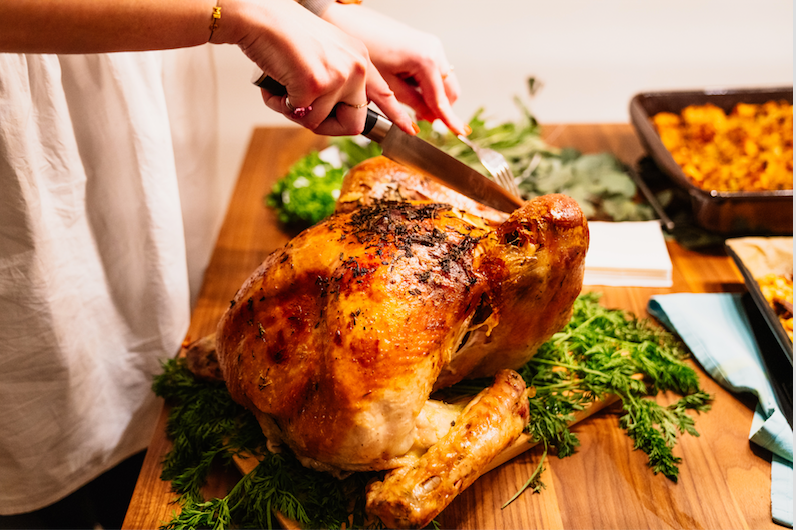Dave and Emily of Kendal Hills Farm have shared some great cooking suggestions on how to enjoy a heritage turkey.
About the Artisan Gold turkeys
Dave and Emily raise Artisan Gold turkeys, a rare breed that is small in size and slow growing. The Artisan Gold turkeys thrive in a free-range or alternative environment where they are able to express natural behaviours while maintaining a high health status. This turkey offers a robust, hearty taste that is unique in the traditional turkey market.
Artisan Gold turkeys have heritage tracing back to the Landes, Aquitaine region of France, and continues to reflect this region's dedication to taste and uncompromising quality.
The turkeys at Kendal Hills Farm enjoy certified organic grains. The processor does a great job cleaning the birds, however, because of the breed sometimes there are pin feathers that will need to be removed from the skin. This can be done with a set of tweezers, and some people choose to ignore removing them since roasting the bird can also take care of these feathers.
Heritage turkeys are more evenly proportioned compared to a conventional turkey, meaning that their breasts are smaller and most cooking instructions and times won't be accurate. Here are some suggestions to guide you in your enjoyment of these turkeys!

